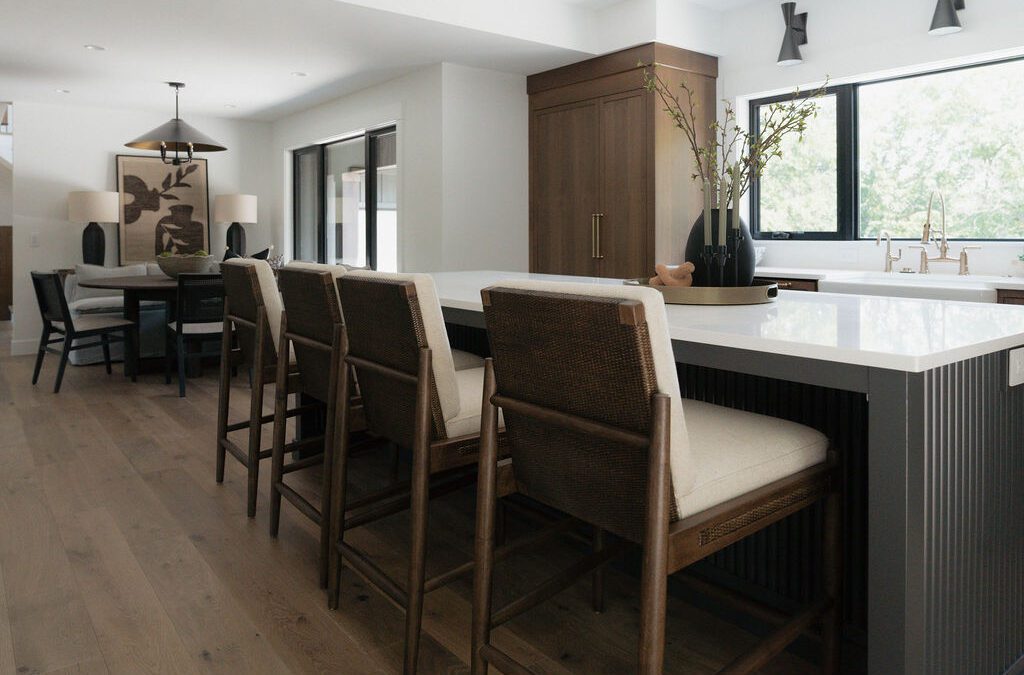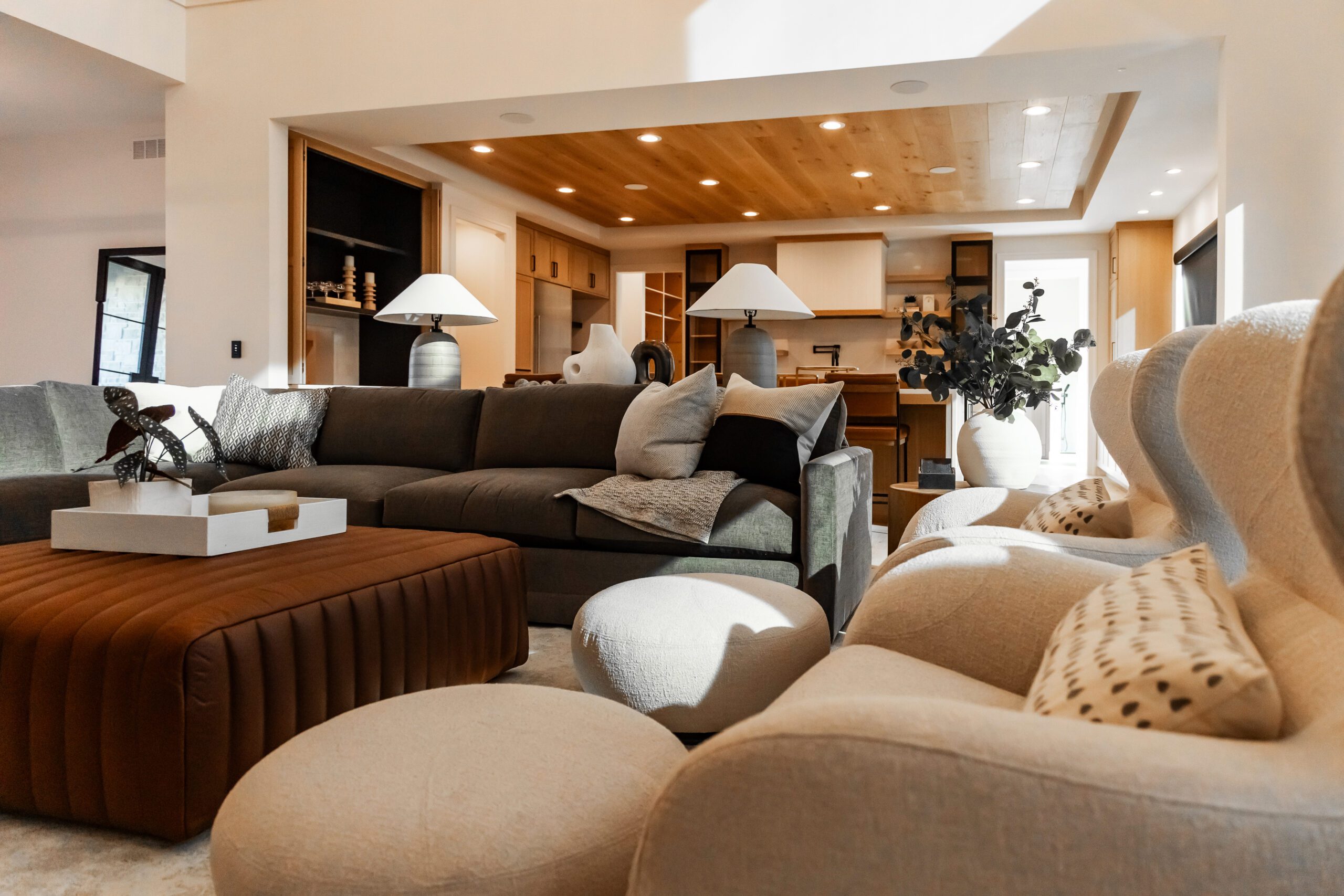Gone are the days of matching every wood finish in a space. Today’s well-designed homes embrace depth and contrast- often achieved by thoughtfully mixing wood tones. Whether you’re combing warm and cool hues, or paining dark finishes with pale oak, this guide breaks down the basics so you can layer wood pieces with confidence and intention.
1. Identify the Dominant Wood Tone
- Start by choosing the most prominent wood element in the room (like floors or a dining table).
- This tone will set the foundation for the rest of your wood pairings.
- Stick with one dominant tone to maintain balance and cohesion.
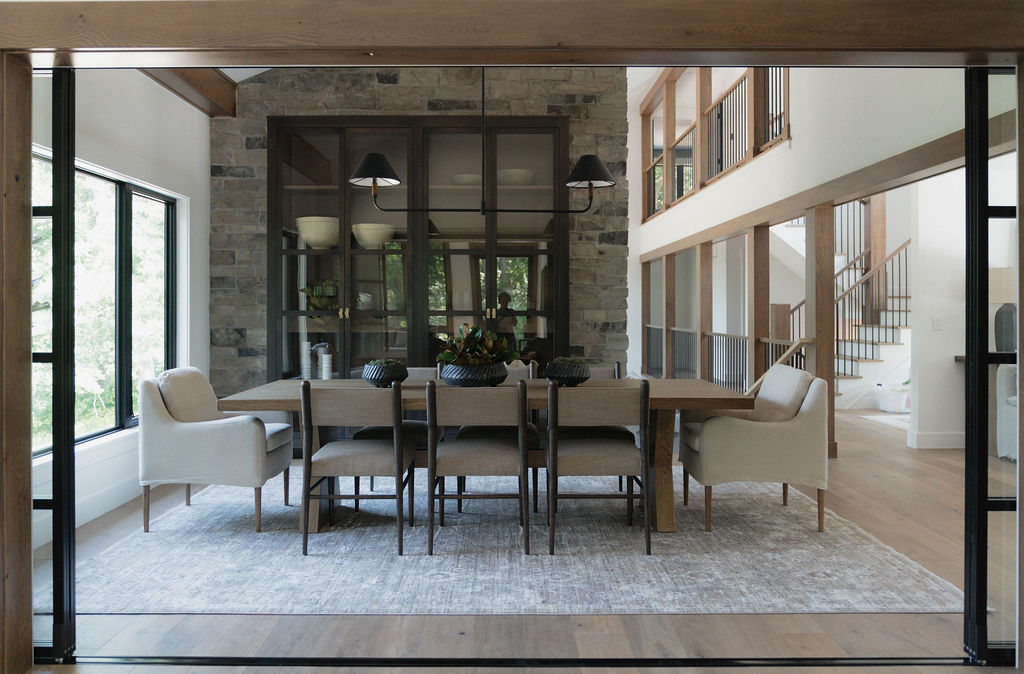
2. Choose a Supporting Tone that Contrasts or Complements
- Pair warm woods (like walnut or cherry) with other warm finishes for harmony.
- Use cool woods (like ash or gray-washed oak) to bring in balance and subtle contrast.
- Add a high-contrast wood to create visual interest without overwhelming the space.
3. Keep Undertones in Mind
- Look for red, yellow, or gray undertones in your wood pieces.
- Mixing different undertones can work- but aim for one to feel intentional and repeated.
- A shared undertone across varied finishes helps unify the look.

4. Add Texture for Depth
- Use carved, reeded, or rustic wood finishes to layer in character.
- Mixing smooth and tactile surfaces makes similar tones feel distinct.
- Varying finishes keeps the palette dynamic without adding more color.
5. Anchor with a Neutral Base
- Rugs, upholstery, or wall color can help visually “ground” mixed woods.
- Neutral backdrops soften the transition between wood tones.
- Use linen, jute, or boucle for added texture and calm.
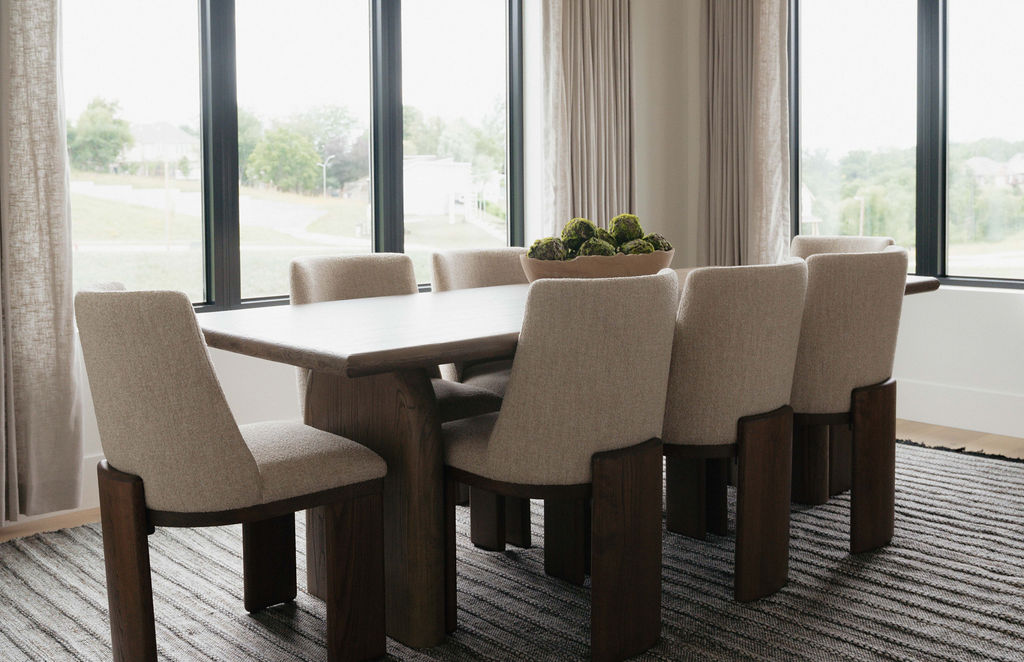
6. Mix in Painted or Upholstered Pieces
- A painted chair or upholstered bench can break up wood-heavy spaces.
- White, black, or muted tones offer visual relief and modern contrast.
- These pieces can help bridge warm and cool finishes seamlessly.
7. Use Repetition to Create Rhythm
- Repeat a wood tone at least twice to make it feel intentional.
- For example: a walnut dining table with walnut picture frames or lamp base.
- This keeps the look cohesive even with multiple finishes.
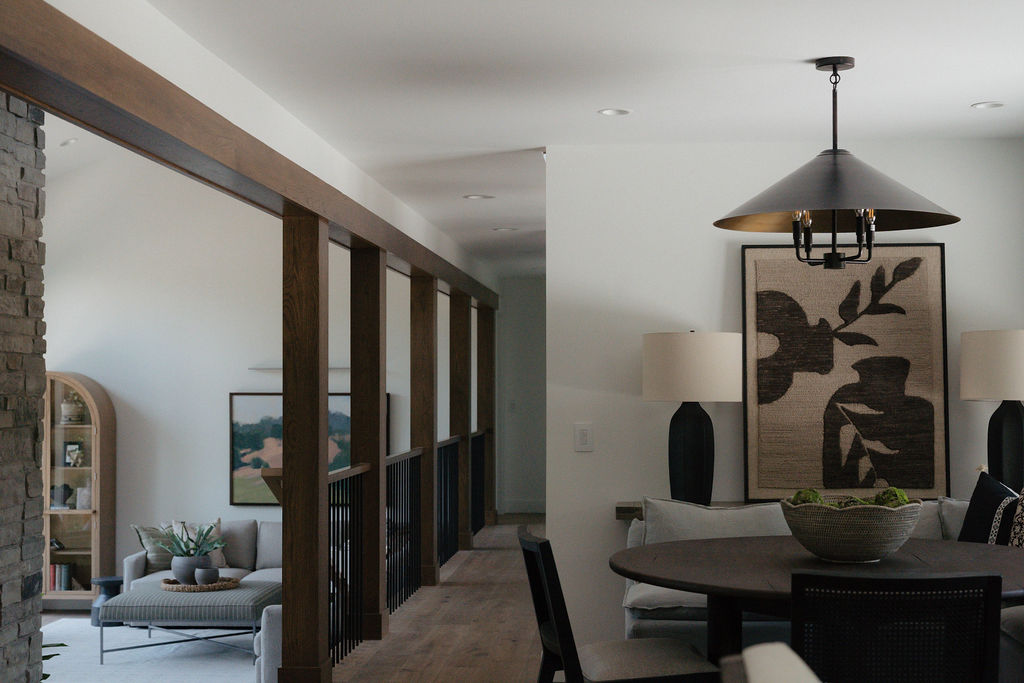
8. Balance Light and Dark Finishes
- Contrast light floors with a darker coffee table or dining chairs.
- Use mid-tones to bridge the gap and soften transitions.
- Avoid clustering all light or all dark finishes in one zone.
9. Consider Wood Grain and Character
- Bold grains add movement; subtle grains feel more refined.
- Combine different wood grains to avoid a flat, overly matched look.
- Rich character pieces (like burl or reclaimed wood) can be accents.
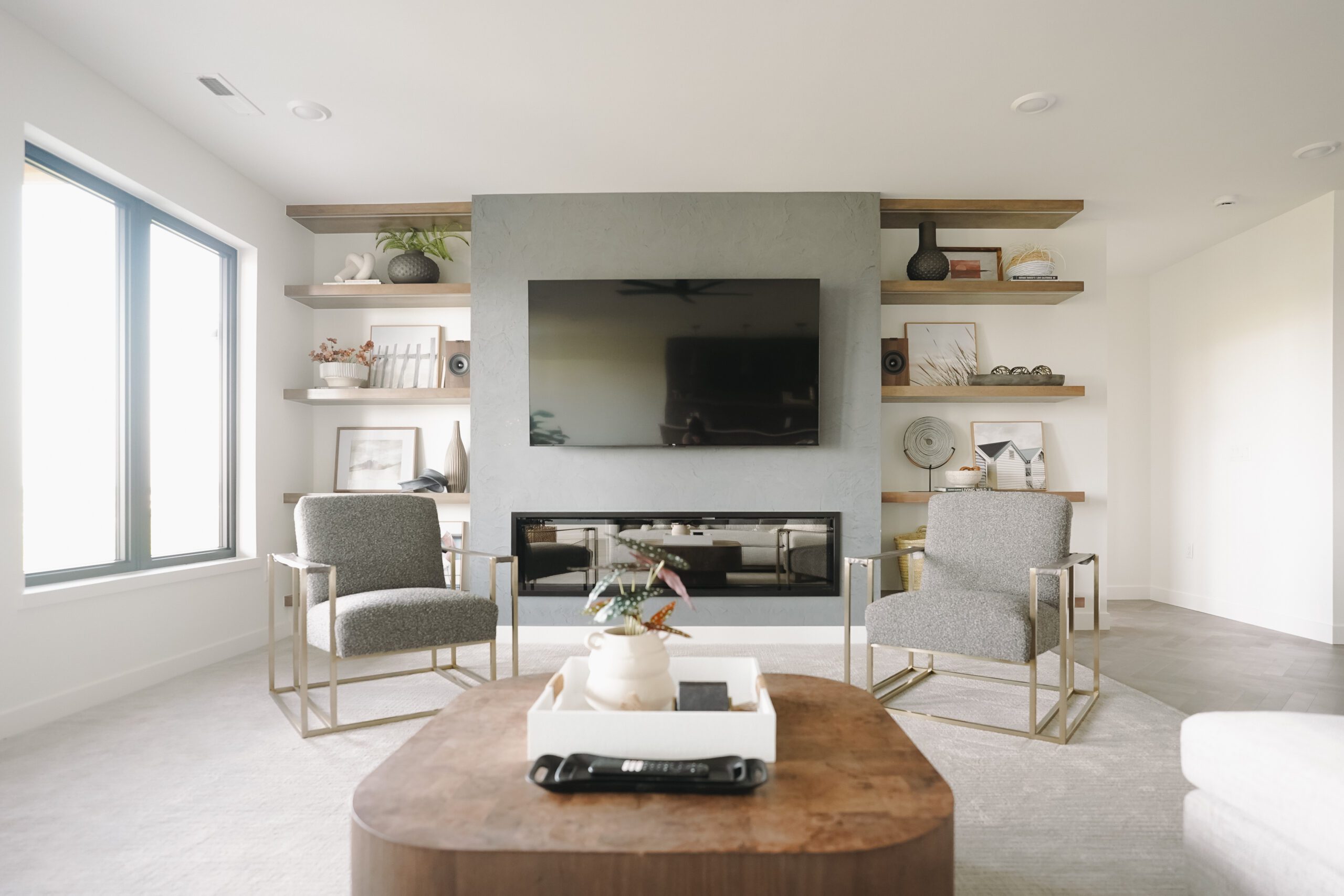
10. Let Your Style Lead the Way
- Organic modern spaces lean into light woods and soft contrasts.
- Traditional or farmhouse styles welcome more rustic mixing.
- Let your home’s vibe- and your personal style- guide your decisions.
Final Thoughts
Mixing wood tones doesn’t have to feel intimidating- it’s about layering finishes in a way that adds richness, personality, and visual movement. By starting with a clear anchor, considering undertones and texture, and trusting your eye, you can create spaces that feel intentional and lived-in. Whether you’re furnishing a whole home or just updating a vignette, varied wood tones bring timeless warmth and curated depth to any space.

LET'S WORK TOGETHER
YOUR TASTE + OUR EXPERTISE
The approachable design team at Mix Home Design Studio creates refreshingly modern and timelessly classic interiors for residential and select commercial new builds and remodels. We thrive on developing lasting client relationships and strive to capture your personal style through thoughtful collaboration.
We’d love to design with you! The first step for new clients is to complete our New Client Questionnaire. Once submitted, we will review your answers and be in touch within a week or two to schedule an initial meeting.
Please note: Due to high demand and full schedules, we currently have a 15-45 day wait list for new clients, depending on the scope of your project.
More From the Blog
From Emily Hughes
How to Make Open Floor Plans Feel Cozy and Defined
Open floor plans are known for their spaciousness, flexibility, and light- but they can sometimes feel a bit too...

